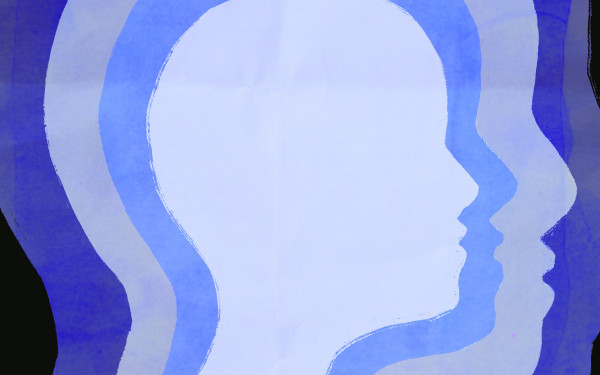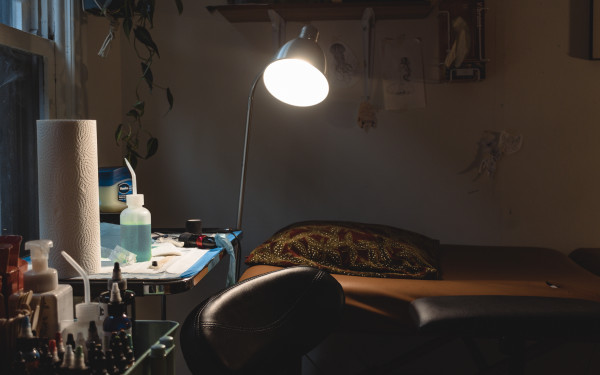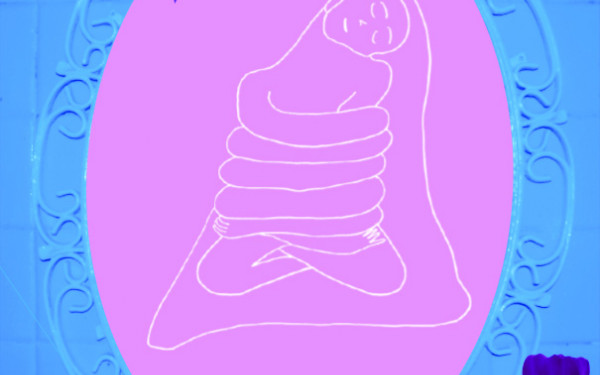Breaking down gender gaps in the climbing community
The growing community of climbers among women is reaching new heights, allowing newcomers to find supportive climbing networks
Over the past two decades, women have been asserting their presence as capable athletes within the climbing community.
From climbing harder grades and setting routes in gyms, they now have new, unprecedented opportunities to empower each other.
Climbing is a sport where each climber can move at their own unique pace. Until the late ‘90s, only a select number of women—Lynn Hill, Robyn Erbesfield-Raboutou and Bethany Rodden to name a few—were known pro rock climbers. Despite being considered leading athletes in the world of climbing, they were far outnumbered by male climbers.
According to a study published in 2021 by Columbia University, “multiple women can be found in the list of top 100 rock climbers, a trend not found in any other major sport.” It emphasizes how climbing is a sport that, unlike more traditionally popular sports, allows both women and men to perform at high, comparable levels.
If women can perform at such high levels, why is the surge of female climbers only occurring now?
“I always thought that climbing was very intimidating, that you had to look a certain way and have this prerequisite of being strong,” said Emma Contaoe, a climbing instructor with over six years of teaching experience.
“When a woman exhibits expert knowledge and strong climbing skills, it uplifts the entire female climbing community,” wrote Tory Lesce in an article published on the Mountain Safety Research blog.

Climbing Escapes, Contaoe’s business, perfectly exemplifies Lesce’s words. She founded it in 2016 and is the climbing instructor during her retreats across the various outdoor climbing sites in Quebec. Climbing Escapes offer climbing courses and the required gear during multi-day climbing and yoga retreats for climbers of all levels.
Despite encouraging fellow women climbers to push themselves to climb at new heights, imposter syndrome remains a challenge Contaoe faces daily. “The barrier of me not being good enough, not being legit enough [as an instructor], comes from within,” she said. “[It’s] because I never had a role model that looked like me.”
As the daughter of Filipino immigrants, she had no one she could identify with as she learned how to climb. She wished to create a safe space for those who struggled with feeling a sense of belonging in a community that was and still is predominantly white and male. She has since succeeded in becoming that role model to other women, especially Women of Colour. The facts are self-explanatory, as the demographic she attracts most is Asian women.
“Most of [the women attending the retreats] said that they didn’t think they could do it, that they would ever be capable because of their fear of heights,” said Contaoe. “Most people who come are beginners who have never climbed indoors or outdoors.”
Contaoe strives for a greater diversity in the sport. Her empowering retreats allow women to just be themselves, however they wish to be.
“The barrier of me not being good enough, not being legit enough [as an instructor], comes from within. [It’s] because I never had a role model that looked like me.” — Emma Contaoe
Women like Ginette Charbonneau, one of the oldest women climbers in Quebec, inspire the younger generation of climbers to keep pushing their limits. During an interview at her regular climbing gym, Allez Up, Charbonneau said she started climbing at 50 years old and now has close to 17 years of experience with the sport. She climbs four times a week, whether it is rock climbing, bouldering, ice climbing, or indoor climbing.
“It’s just normal for me,” Charbonneau said regarding her very active lifestyle.
Such a casual approach to the sport makes her a very approachable and relatable role model. It is not uncommon for her to have strong climbers of either gender telling her she’s their idol, which never fails to amuse her.
“Women have a different definition [than men] of success, they cheer each other on more easily, and it comes from the heart,” Charbonneau said when discussing the different attitudes about climbing between both genders.
Throughout her multiple climbing adventures, Charbonneau noticed how there is an increasing number of women climbing by themselves. “We can now see a bunch of girls climbing together, going on climbing trips,” she said. “Before, when you would see a girl climbing outdoors, it would usually be with a group of guys, and she would always be in a relationship with one of them.”

Climbing is a sport that incites those practicing the sport to help one another. Watching someone else will inevitably teach the observer new skills, as the person climbing usually has their own climbing style. Charbonneau explained that comparing one’s own movements to those of another climber can be healthy and beautiful in its own way. It highlights the diversity in people, and how unique every body is.
Corinne Baril, a route setter at the bouldering gym Bloc Shop, believes routes should be inclusive for climbers of all levels. Bouldering is a type of climbing where the climbing routes are shorter and no ropes are used. Instead, crash pads are used to cushion the climbers’ falls.
Setting new routes that place new climbing projects on the wall involves a lot of teamwork. “We try to make it as perfect as possible for everyone on the team,” said Baril. Simply put, if the projects feel good for all the route setters, then they will likely feel pretty good to every client that walks into the gym.”
“It’s more in the details, the way you generate the movement [that varies],” Baril said about the different people climbing routes. “Guys don’t always realize how much strength is required for big moves,” she said. She explained that because of the different bodies everyone has—whether it is men or women who are tall or short, flexible or not—a good route setting team should be composed of diverse climbers.
“Elevating more women not only cements women’s place in the climbing community, but creates a far more inclusive culture,” wrote Lesce. This growing inclusivity benefits climbers of all genders, ages, body types, and ethnicities, as more styles of climbing are now showcased in gyms.
This article originally appeared in The Body Issue, published February 1, 2022.






